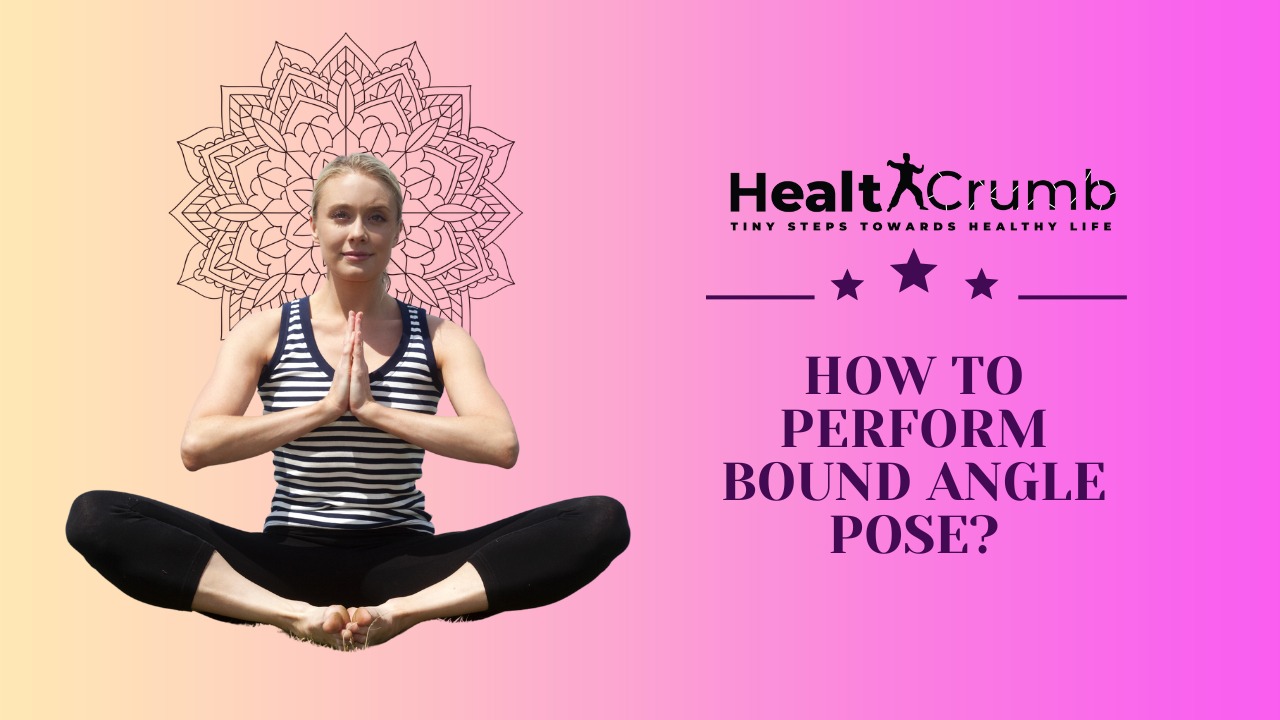What is Bound Angle Pose?
Bound angle pose or the baddha konasana is a yoga asana introduced in the ancient text of yoga ‘hatha yoga pradapika’.
This asana is performed all around the world to gain flexibility and to improve muscle work.
Baddha konasana is a Sanskrit word that can be broken as, ‘Baddha’ meaning bound, ‘kona’ meaning angle and ‘asana’ meaning pose.
This asana is performed mainly to gain flexibility in the pelvic area and groin area.
It stresses on the pelvic area and improves muscles function in back, neck and shoulder region.
It is also called the cobbler’s pose because typical Indian cobblers sit in this pose.
Baddha konasana is a pose that promotes spirituality, strengthens the back, improves spine functioning and the posture, increases awareness and establishes balance in the body.
What are the Benefits of Performing the Bound Angle Pose?
There are multiple benefits of doing the bound angle pose. It helps to improve hips and thigh muscle.
While performing the asana, it massages the internal organs. This helps to stimulate ovaries, bladder and kidneys.
It has excellent effect on abdominal muscle and organs. It also improves functioning of prostate gland.
Apart from physical benefits, baddha konasana also has improving effects on mental health.
It can help reduce symptoms of depression, anxiety, and stress. If the disease is minor, it might even help to cure it.

Since, the pose focuses on pelvic reason, it also helps to soothe menstrual discomfort.
This yoga is also prescribed to pregnant ladies. If the pregnant woman performs this yoga in the first trimester of pregnancy, it can help them to reduce sciatica, which is a common pain in pregnant women.
It also helps them to reduce labour pain.
Women going through menopause should include bound angle pose in their daily exercise to get relief from symptoms of menopause.
A posture in this asana stimulates blood circulation. When you bend down and touch the floor with your head, it improves blood circulation. This can improve heart’s general health.
This asana helps to create balance between the body and soul. This also helps to get rid of certain diseases.
Performing baddha konasana can help to relive hernia pain in testicles.
Who Should Not Perform This Asana?
The bound angle pose should not be done by anybody who is suffering from a knee, groin or hip injury.
People suffering from heart disease or blood pressure problem should avoid doing this asana unless under the guidance of professional care.
Women should not perform bound angle pose when they are menstruating.
Also Read – Celery Juice- Health Benefits of The Juice
How to Do Bound Angle Pose?
To perform this asana, you need a yoga mat, a cushion if your spine turns into a curve while sitting and a peaceful place to do yoga.
If you have a habit of slouching or your thighs rise above the sole, you should use support under your hips and knees.
If you are an amateur, then it is advised to perform this asana under the supervision of a professional or an instructor.
Spread the mat and sit on it.
You need to calm yourself first. When you have warmed up and your mind is calm, you can begin.
Step 1.
Spread your legs in front of you. (You can also start by sitting in Sukhasana, where your sole is under your thigh and knees are outstretched.)
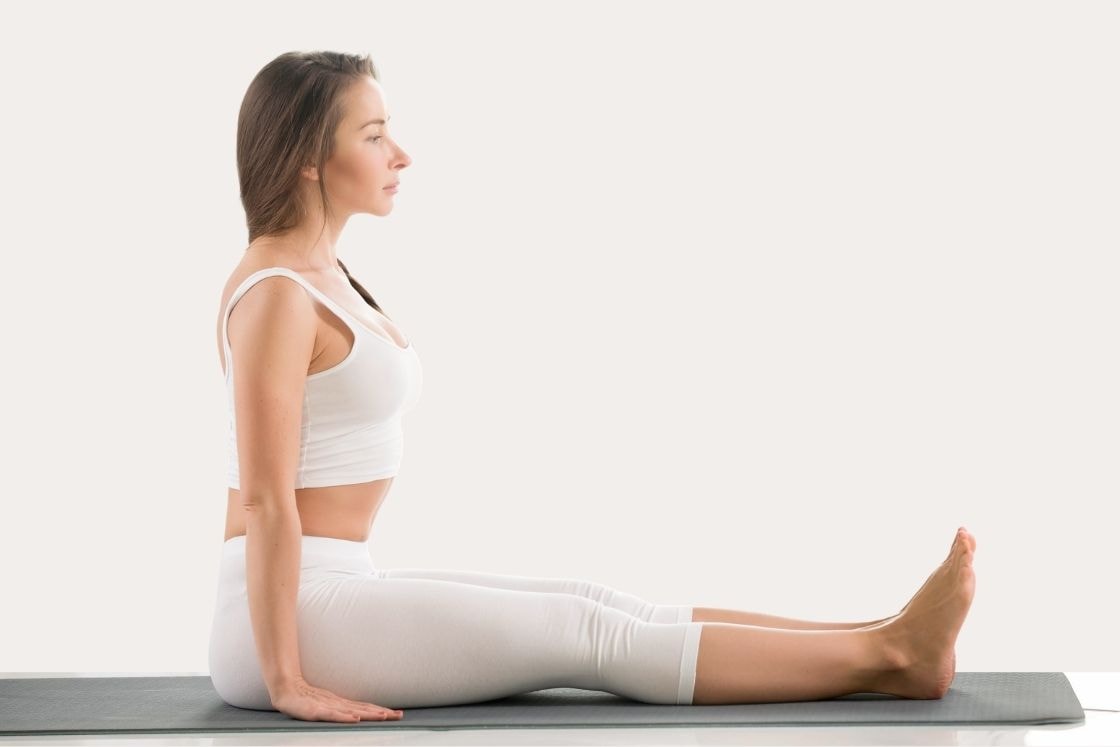
Step 2.
Fold the knees and join your feet. Your knees should be outstretched on both sides.
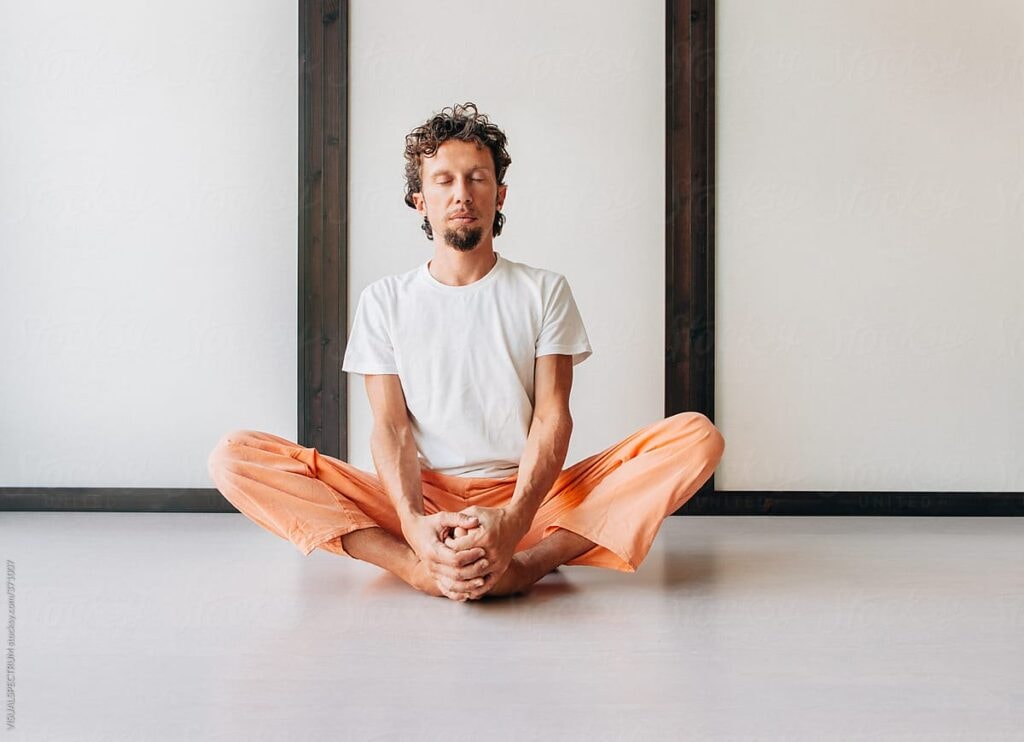
Step 3.
Hold your feet with your hands and adjoin the fingers.
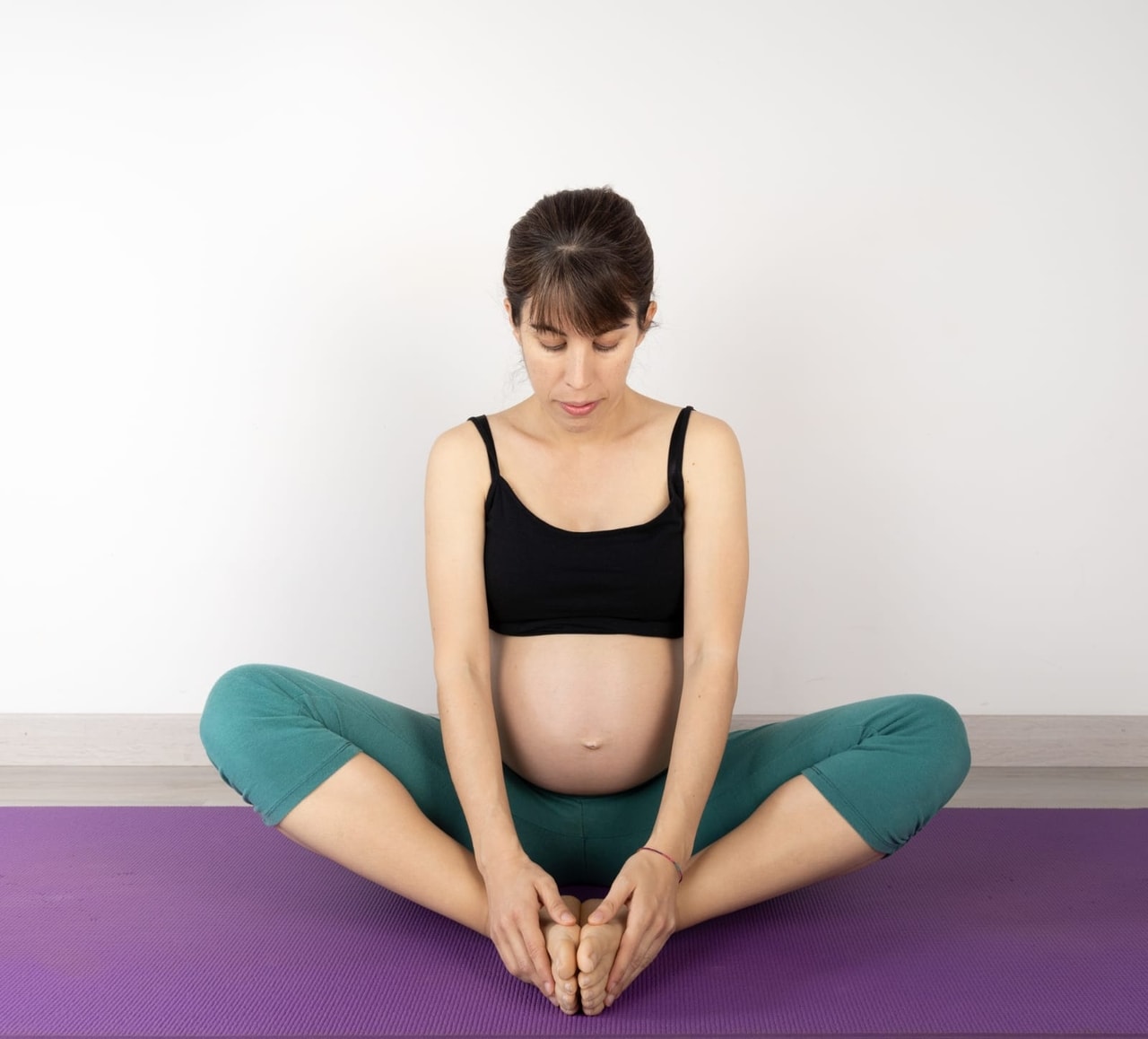
Step 4.
Inhale. Bring your feet close to your pelvis. Remember that you should bring the feet only as close as it is comfortable. Do not exert too much pressure on the pelvis.
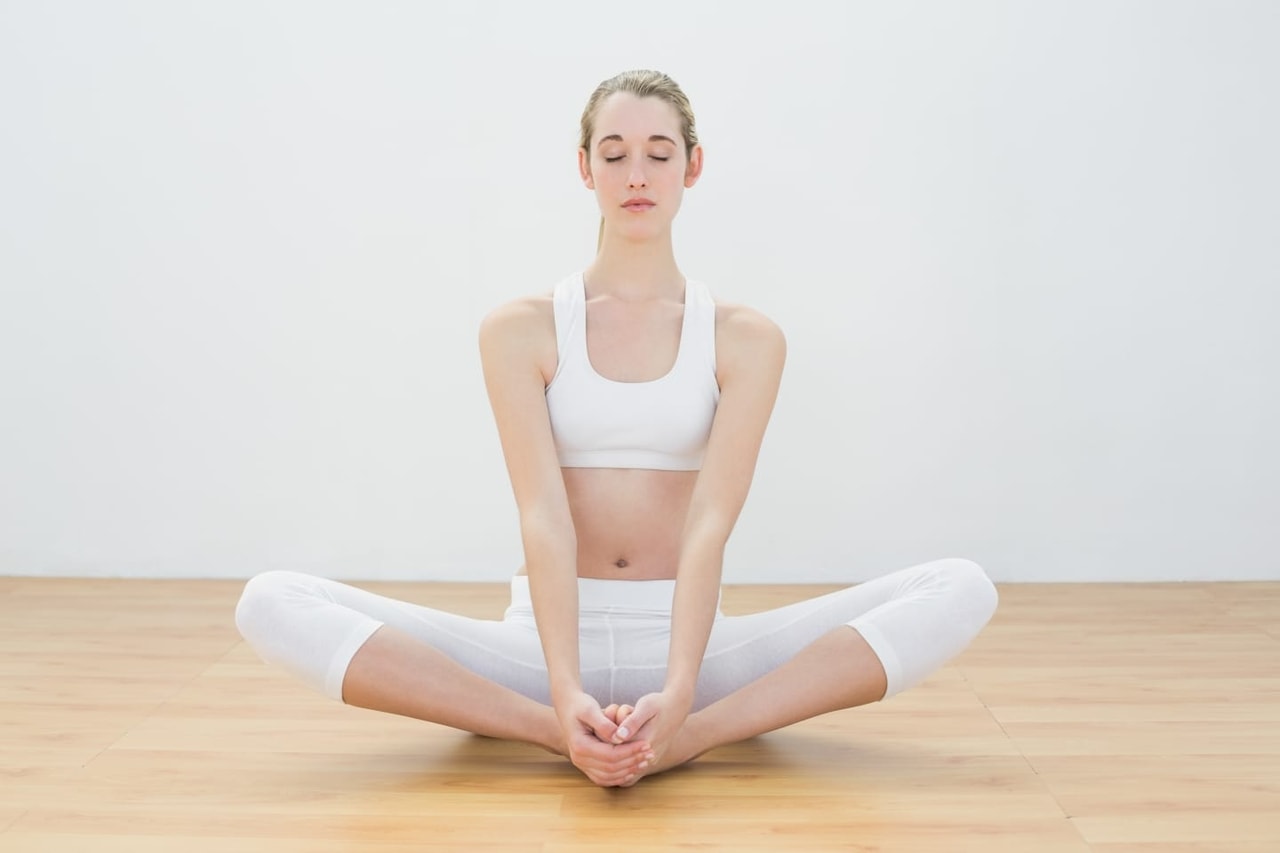
It might be difficult for you to perform the next step if you have a pelvic problem. So, you can use a cushion and sit on it to perform the next step.
Step 5.
Exhale and push your body forward and try to touch the floor with your head. Go as far as it is comfortable for you. Bound angle poses can be a little difficult for certain people.
It is an asan that makes you exceed your limits. You may feel uncomfortable while pushing your limits.
You can choose to stop at your body limits if your knee starts to pop. This may be the sign that your body can really not go beyond this, and you might hurt yourself if you go further.
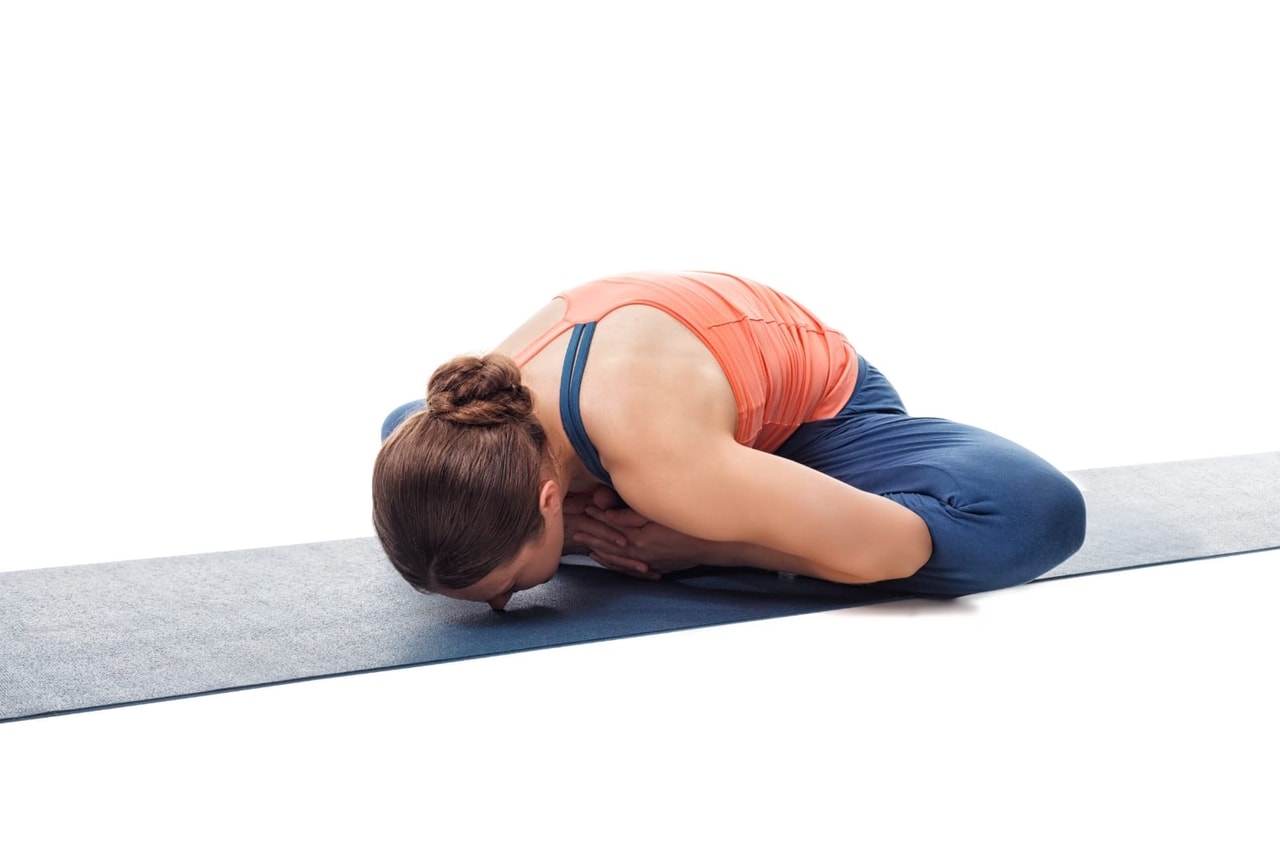
However, if you only feel uncomfortable and your body doesn’t react abnormally to it, you can push your limits.
It’s always good to go beyond what you can do and see what more you are capable of.
Yoga is about flexibility, and you cannot achieve it without being strict with your body.
However, yoga is also about wellness and balance. Therefore, it depends on individual goals whether you want to go beyond and push further.
Step 6.
After you have touched the floor with your head, take a deep breath and rise.
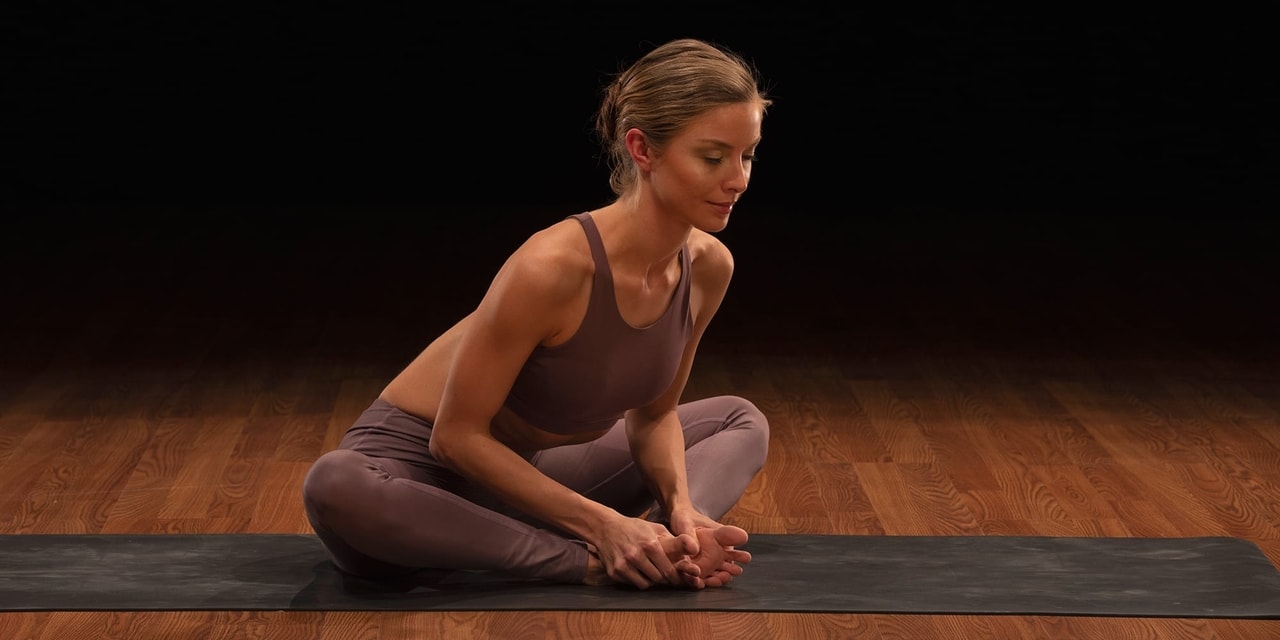
Step 7.
When you are back in a straight posture, exhale. Then, release your feet and get back into the Sukhasan asana. You need to keep your sole under your thigh and outstretch the knees.
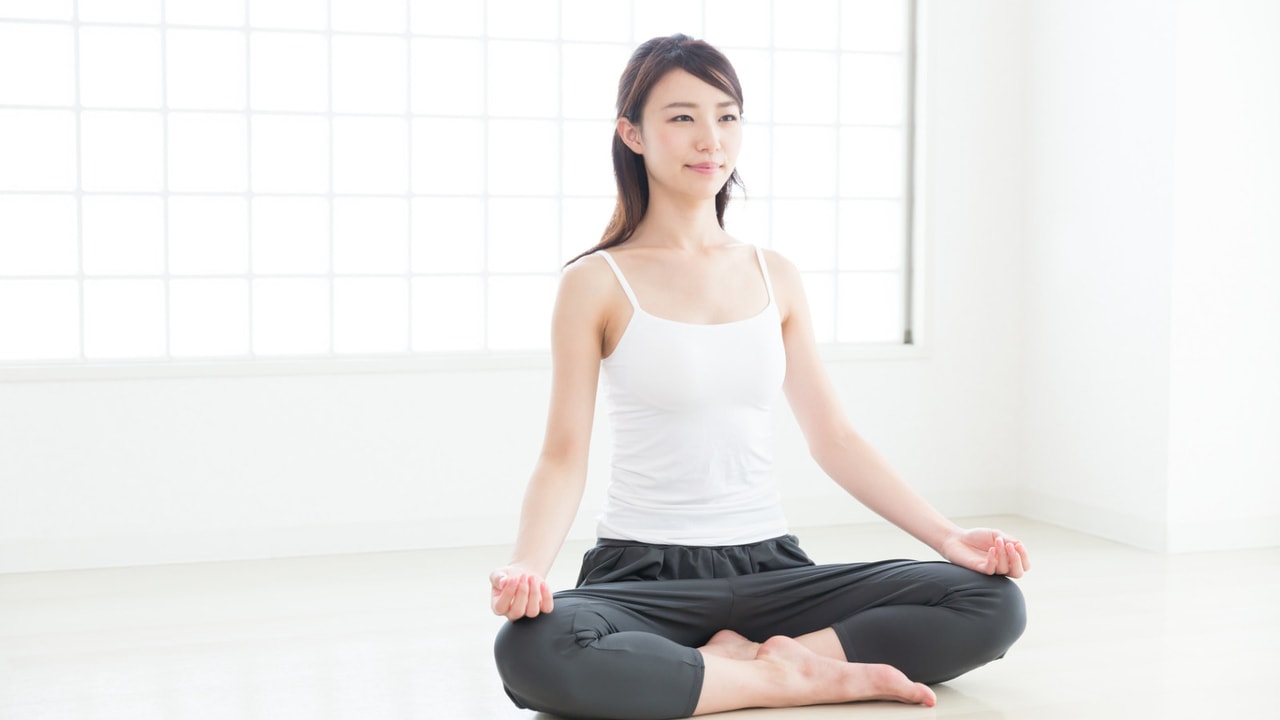
Keep your hands comfortably on your knees and close your eyes. Take a deep breath.
The Bottom Line
Bound angle pose or the Baddha Konasana is a yoga asana introduced in the hatha yoga pradapika.
This asana should be performed under the supervision of an instructor if you are entirely new to it.
Performing baddha konsana can lead to various health benefits. It can be performed by any age group.
Bound angle pose is specifically suggested to pregnant ladies, women going through menopause, people with heart disease and groin injury.
This asana also helps to aid mental health such as depression, anxiety, stress, and fatigue.
Even though this asana has several health benefits, there is certain medical conditions under which it should not be performed.
Further Reading:

